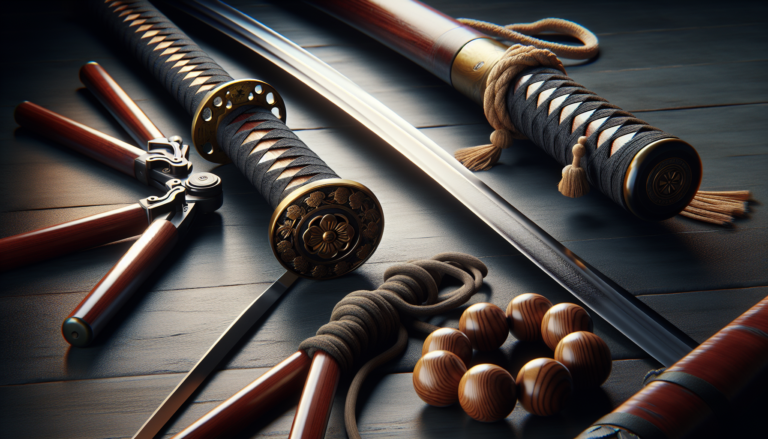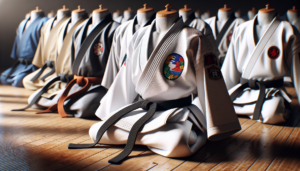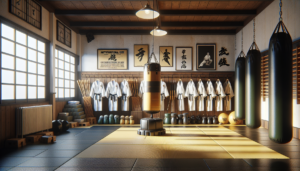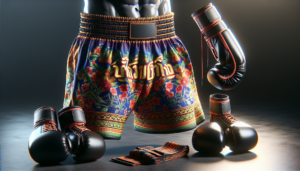Japanese martial arts have a rich history and tradition, with a variety of weapons used for both training and combat. From the iconic katana sword to the versatile nunchaku, these weapons showcase the ingenuity and effectiveness of martial arts techniques. In this comprehensive guide, we’ll explore the most popular Japanese martial arts weapons, their unique features, and how they are used in various disciplines.
Martial arts weapons encompass a wide selection, offering both traditional and unique options for practitioners. These weapons are designed to enhance efficiency and effectiveness in combat, while also providing opportunities for skill development and training. Whether you’re interested in the stealth techniques of ninjitsu or the striking power of karate, there is a Japanese martial arts weapon that can suit your needs.
Popular Japanese Martial Arts Weapons
Among the vast array of Japanese martial arts weapons, several stand out as particularly popular and iconic. These weapons have been used for centuries in various martial arts disciplines, and continue to be studied and practiced today. From the graceful movements of the katana to the striking techniques of the nunchaku, each weapon offers unique advantages and challenges for the martial artist.
When exploring popular Japanese martial arts weapons, it’s important to consider their specific applications and the disciplines in which they are most commonly used. For example, karate weapons like the tonfa and sai are designed for close-quarters combat and defense, while the naginata polearm was historically used by women to defend their homes against sword-wielding attackers.
Katana: The Iconic Samurai Sword
Perhaps the most famous of all Japanese martial arts weapons is the katana, the curved sword that was the weapon of choice for samurai warriors. The katana is known for its exceptional craftsmanship, with blades that are both incredibly sharp and remarkably durable. The art of drawing and wielding the katana is a central component of many Japanese martial arts, including iaido and kendo.
When training with a katana sword, it’s essential to focus on proper form and technique. The katana requires a combination of strength, speed, and precision to wield effectively, and students must spend years honing their skills to master this iconic weapon. Many martial arts schools use wooden training swords called bokken to allow students to safely practice katana techniques before moving on to live blades.
Nunchaku: Versatile and Dynamic
The nunchaku, made famous by martial arts legend Bruce Lee, consists of two short sticks connected by a chain or rope. This traditional Japanese weapon is known for its versatility, allowing the user to execute a wide range of striking and blocking techniques. Nunchaku training helps develop hand-eye coordination, speed, and agility.
Nunchaku techniques often involve rapid strikes and rotations, making it a visually impressive weapon. However, mastering the nunchaku requires significant practice and skill to avoid self-injury. Many martial arts schools begin nunchaku training with foam or plastic versions to minimize risk while students learn proper handling and control.
Sai: The Three-Pronged Weapon
The sai is a distinctively shaped weapon featuring a pointed central prong flanked by two shorter projections. Originating in Okinawa, the sai weapon is often used in pairs, with one in each hand. The unique design allows for both offensive and defensive techniques, making it a versatile choice for close-quarters combat.
Training with the sai helps develop grip strength, precision, and the ability to disarm an opponent. Like many Japanese martial arts weapons, the sai requires a combination of speed and control to use effectively. Practitioners must learn to transition smoothly between striking, blocking, and trapping techniques to make the most of this unique weapon.
Naginata: The Polearm of Choice
The naginata is a traditional Japanese weapon consisting of a long pole with a curved blade on one end. Historically, the naginata was often used by women to defend their homes against swordsmen, as the reach of the polearm allowed them to keep attackers at a distance. The naginata remains a popular choice for martial artists interested in weapons with a longer range.
Training with the naginata polearm emphasizes stance, footwork, and the ability to generate power from the hips and core. Naginata techniques often involve sweeping, slicing, and thrusting motions, making it an effective weapon against a variety of opponents. Many martial arts schools include naginata training as part of a well-rounded curriculum.
Shuriken: The Stealthy Throwing Stars
Shuriken throwing stars are small, multi-pointed weapons designed for throwing. Often associated with the stealthy techniques of ninjitsu, shuriken come in a variety of shapes and sizes. While not typically used as a primary weapon, shuriken can be effective for creating distractions or targeting specific areas of an opponent’s body.
Training with shuriken focuses on accuracy, distance control, and quick, subtle throwing motions. As with any projectile weapon, safety is paramount when practicing with Japanese martial arts weapons like shuriken. Many martial arts schools use plastic or rubber training versions to minimize the risk of injury during practice.
Kusarigama: The Sickle and Chain
The kusarigama is a unique Japanese martial arts weapon that combines a sickle (kama) with a long chain weighted on the opposite end. The versatility of this weapon allows for both close-quarters combat and long-range attacks. The sickle can be used for slashing and hooking techniques, while the chain can be used to entangle an opponent or create distance.
Mastering the kusarigama weapon requires a high level of skill and coordination, as the practitioner must learn to control both ends of the weapon simultaneously. Training often involves learning to transition smoothly between the sickle and chain, as well as developing the ability to accurately target an opponent with the weighted end. The kusarigama is a popular choice for martial artists interested in weapons with a high skill ceiling.
Specialized Weapons in Japanese Martial Arts
In addition to the more well-known Japanese martial arts weapons, there are also many specialized weapons used in specific disciplines or for particular purposes. These weapons often require advanced training and are used in conjunction with specific techniques or strategies.
Ninjitsu weapons, for example, focus on stealth and deception, utilizing creative weaponry design to exploit gaps in an opponent’s defense and give the ninja an advantage. Hojojutsu, the art of rope handling, also incorporates a variety of weapons and tools for restraining and controlling opponents.
Tessen: The Iron Fan
The tessen, or iron fan, is a weapon that disguises its true nature. At first glance, it appears to be a simple folding fan, but the outer spokes are made of heavy plates of iron, making it a formidable striking weapon. The tessen fan weapon was historically used by samurai as a way to defend against sword attacks in situations where carrying a sword was not permitted, such as indoors or at formal events.
Training with the tessen focuses on quick, snapping motions to generate power, as well as precision strikes to vulnerable areas. Tessen techniques often involve a combination of blocks and counterattacks, using the fan’s unique shape to trap an opponent’s weapon and create openings for strikes.
Manrikigusari: The Weighted Chain
The manrikigusari is a chain weapon with weights attached to each end, used for striking, entangling, and disarming techniques. This flexible weapon allows for a wide range of motion and can be used to attack from various angles. The manrikigusari chain weapon is often used in conjunction with other weapons or unarmed techniques, making it a versatile choice for experienced martial artists.
Training with the manrikigusari emphasizes fluid motions, control, and the ability to quickly change the direction and intensity of strikes. Precision is key, as the weighted ends can be difficult to control without proper technique.
Kama: The Farming Sickle Turned Weapon
The kama, originally a farming tool used for reaping crops, has been adapted for use as a martial arts weapon. The kama sickle weapon features a short handle with a curved blade, making it effective for hooking and slashing techniques. In some styles, kama are used in pairs, with one in each hand.
Training with the kama focuses on developing a strong grip, precise strikes, and the ability to control the weapon’s momentum. Kama techniques often involve circular motions, using the weapon’s shape to redirect an opponent’s energy and create openings for counterattacks.
Tonfa: The Baton with a Twist
The tonfa is a baton-like weapon with a perpendicular handle attached to the main shaft. This unique design allows for both striking and blocking techniques, as well as joint locks and control maneuvers. The tonfa baton weapon is commonly used in Okinawan karate and is often employed by law enforcement for crowd control.
Tonfa training emphasizes proper grip and stance, as well as the ability to smoothly transition between various holding positions. Practitioners must learn to use the tonfa’s unique shape to their advantage, deflecting incoming strikes while delivering powerful blows.
Training and Safety with Japanese Martial Arts Weapons
When training with Japanese martial arts weapons, safety and proper technique are of utmost importance. Martial arts weapons, even in training versions, can cause serious injury if used improperly. It’s essential to train under the guidance of a qualified instructor and to always prioritize safety during practice.
In addition to learning proper handling and technique, martial artists must also develop a deep respect for their weapons. This includes understanding the history and cultural significance of each weapon, as well as treating them with care and reverence both in and out of training.
Training Weapons and Materials
Many Japanese martial arts weapons have training versions made from durable materials like wood, foam, or plastic. These training weapons allow practitioners to safely develop their skills without the risk of serious injury. As students progress, they may move on to using weapons made from traditional materials like steel or hardwood.
When selecting training weapons, it’s important to choose high-quality items that accurately replicate the balance, weight, and feel of the real weapon. Poor quality training gear can hinder skill development and lead to bad habits that may be difficult to correct later on.
Safety Precautions and Best Practices
Safety should always be the top priority when training with martial arts weapons. Here are some key safety precautions and best practices to keep in mind:
- Always train under the supervision of a qualified instructor.
- Wear appropriate protective gear, such as gloves, shin guards, and eye protection.
- Inspect weapons before each use to ensure they are in good condition and free from damage.
- Never use live blades or sharpened weapons during training.
- Always be aware of your surroundings and the location of other students during training.
- Practice proper storage and maintenance of weapons to prevent damage or degradation.
By prioritizing safety and proper technique, martial artists can enjoy the benefits of training with Japanese martial arts weapons while minimizing the risk of injury.
Conclusion: The Legacy of Japanese Martial Arts Weapons
Japanese martial arts weapons have a rich history and continue to play a significant role in modern martial arts training. From the iconic katana to the versatile nunchaku, each weapon offers unique challenges and opportunities for personal growth and skill development.
By studying traditional Japanese weapons within the context of martial arts, practitioners can gain a deeper understanding of the cultural and historical significance behind each weapon. This knowledge can inform technique and help students develop a greater appreciation for the art as a whole.
Whether you’re a beginner exploring the world of martial arts training or an experienced practitioner looking to expand your skillset, incorporating Japanese martial arts weapons into your routine can offer a new level of challenge and personal growth. With dedication, proper training, and a commitment to safety, anyone can experience the benefits of studying these fascinating and effective tools of combat.






